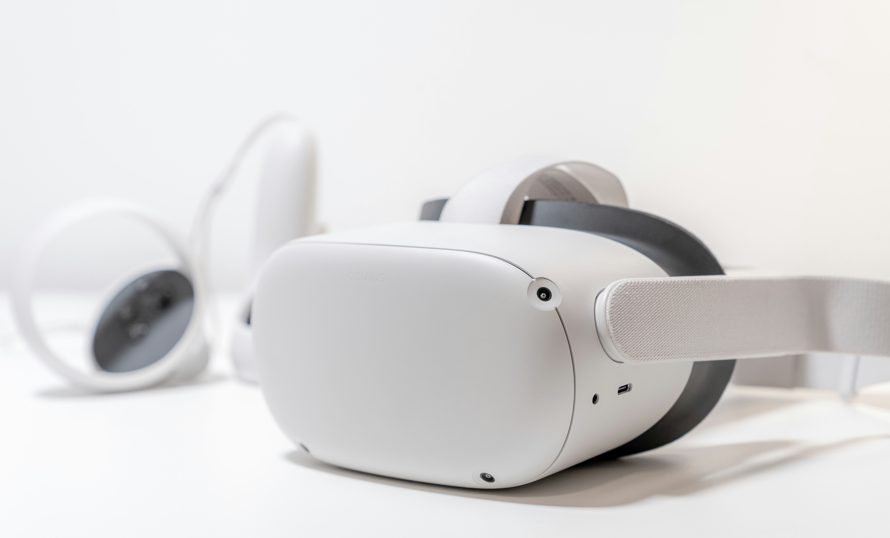
@ShahidNShah


Virtual reality (VR) is no longer just a tool for gaming and entertainment; it is increasingly recognized as a groundbreaking technology in the field of healthcare. In particular, VR therapy has shown immense promise as a means of managing chronic pain, a challenge often faced by individuals recovering from opioid addiction. Many who struggle with opioid use disorder first turned to opioids as a response to physical pain, and finding alternative ways to manage that pain is essential to long-term recovery. Here, we explore how VR therapy is helping those in recovery manage pain, reduce anxiety, and build new coping mechanisms without the need for addictive substances.
Virtual reality therapy uses immersive experiences to help users shift their focus away from pain, providing relief through distraction, relaxation, and the reduction of pain perception. VR therapy engages multiple senses by placing the individual in a fully immersive environment, often involving visual, auditory, and sometimes even tactile elements. This multisensory experience can help “retrain” the brain to perceive pain differently, reducing its intensity and duration.
A growing body of research supports VR as an effective tool for managing acute and chronic pain. Studies have shown that VR can significantly decrease pain in conditions such as burn injuries, arthritis, and fibromyalgia. For those in recovery from opioid addiction, who may also struggle with chronic pain, VR offers a non-addictive pain management method that complements traditional and alternative therapies.
VR therapy is often structured around specific modules or programs that address various aspects of pain management and addiction recovery. Here are a few ways VR therapy can directly benefit individuals recovering from opioid addiction:
Several addiction treatment centers and hospitals have already begun to integrate VR into their pain management and recovery programs. For example, the Cedars-Sinai Medical Center in Los Angeles has conducted research demonstrating that VR can reduce pain levels in hospitalized patients by up to 24%—a significant amount for those struggling with both physical and emotional distress during recovery.
In these facilities, VR is used not only for pain management but also as a complementary therapy to support overall mental well-being. For individuals with co-occurring mental health conditions and substance use disorders, often referred to as a dual diagnosis, VR therapy can provide tailored interventions addressing both pain and emotional health simultaneously. Programs grounded in dual diagnosis treatment principles may incorporate VR to simulate scenarios for managing anxiety, depression, or trauma triggers that could otherwise hinder recovery.
Patients can also experience nature walks, participate in immersive support group settings, and receive therapy in virtual spaces designed to promote relaxation and emotional healing. This technology provides a versatile way for clinicians to support patients’ physical and mental health, helping reduce reliance on traditional painkillers and other medications.
While VR therapy in clinical settings has gained popularity, recent advancements are making it possible for individuals to use VR at home as part of their pain management routine. With affordable VR headsets and user-friendly applications now available, people in recovery can access VR programs specifically designed for chronic pain management. Some of these applications provide daily relaxation sessions, guided imagery, and personalized pain tracking, helping individuals keep their pain in check between therapy sessions.
Moreover, VR applications tailored to chronic pain management are beginning to integrate with wearable devices and health apps, allowing users to monitor pain, stress, and sleep patterns. This data can then be shared with healthcare providers, helping create more effective, personalized treatment plans based on real-time information.
As VR technology continues to advance, we can expect to see even more innovative applications in addiction recovery. Future developments might include enhanced biofeedback integration, where VR experiences adapt in real-time to the user’s heart rate or stress levels, creating a fully interactive and responsive environment. Additionally, advancements in AI and machine learning could allow VR programs to learn from users’ pain patterns and emotional responses, providing increasingly personalized pain relief experiences.
Virtual reality therapy represents a promising new frontier in managing pain for those recovering from opioid addiction. By offering distraction, relaxation, and tools for emotional resilience, VR provides a unique, immersive experience that can help individuals stay on the path to sobriety. Through clinical settings and at-home applications, VR therapy empowers people in recovery with a non-addictive way to cope with pain, reduce anxiety, and build new coping mechanisms.
While it’s still an emerging technology, VR therapy has the potential to become an essential tool in holistic addiction treatment plans, offering an innovative and effective means of managing pain and supporting long-term recovery. For those committed to sobriety, VR therapy could offer a vital lifeline—an escape not into substances, but into a healthier, brighter future.

Smart algorithms will soon diagnose skin cancer, 3D printers will print out synthetic skin to fight tissue shortages. Find out more! Skin cancer is too commonAccording to statistics from the WHO, …
Posted Nov 22, 2024 Digital Health Innovation
Connecting innovation decision makers to authoritative information, institutions, people and insights.
Medigy accurately delivers healthcare and technology information, news and insight from around the world.
Medigy surfaces the world's best crowdsourced health tech offerings with social interactions and peer reviews.
© 2025 Netspective Foundation, Inc. All Rights Reserved.
Built on Dec 17, 2025 at 12:37pm